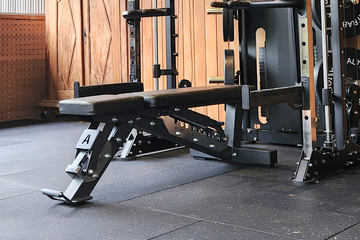Starting a fitness business from scratch demands meticulous planning and strategic execution to thrive in the competitive landscape of 2024. Here’s a comprehensive guide to kickstart your venture and set it on the path to long-term success.
Discover Your Fitness Niche: A Strategic Approach
Standing out in the crowded fitness market begins with identifying your niche and target audience. Before diving in, conduct thorough market research to understand local demographics and lifestyle preferences. This insight will help tailor your offerings to meet the specific needs and desires of your community.
Crafting a Comprehensive Business Plan
A well-defined business plan is essential for guiding your fitness business towards success. Key elements to include are:
- Mission Statement and Brand Identity: Define the core values that shape your fitness business and establish a compelling brand identity.
- Target Audience Analysis: Dive deep into understanding your target audience’s motivations and preferences to inform effective marketing strategies.
- Competitor Analysis: Assess competitors in your market to identify gaps and opportunities to differentiate your business.
- Financial Projections: Project startup costs, revenue streams, and growth targets to facilitate financial planning and secure financing.
Navigating Legal Requirements
Choosing the right business structure is crucial. Seek advice from legal and financial experts to determine the best option based on factors like tax implications and liability protection. Ensure compliance by registering your business and obtaining necessary licenses and permits.
Leverage Technology for Efficiency
Invest in fitness business management software to streamline operations and enhance client experiences. Additionally, utilize accounting software to track expenses and generate insightful financial reports, enabling informed decision-making.
Start your Fitness Business Journey with Confidence
Launching a fitness business in 2024 presents ample opportunities for success. By identifying your niche, crafting a robust business plan, navigating legal requirements, and leveraging technology, you can position your business for long-term prosperity while making a meaningful impact on your community's health and wellness.
Securing Financial Support
Commencing a fitness business demands a substantial capital investment covering equipment, leasing space, and marketing efforts. If self-funding isn’t an option, exploring financing avenues becomes imperative.
-
Bank Loans: Approach banks or credit unions with a solid business plan outlining revenue streams and projected expenses. Good credit and collateral, like equipment or property, bolster your loan application.
-
Crowdfunding: This increasingly popular option allows you to raise capital through online platforms by offering rewards or equity in return.
-
Leasing Equipment: Consider leasing fitness equipment to alleviate upfront costs. Some sourcing companies offer flexible leasing options, allowing monthly installments rather than a lump sum payment.
Finding the Ideal Location
Selecting the right location is pivotal for your fitness business's success, impacting startup costs and client acquisition.
-
Type of Business: Determine whether a boutique gym or a larger facility with multiple studios suits your vision.
-
Accessibility: Ensure easy accessibility by car and public transport with ample parking. High foot traffic areas enhance visibility and potential clientele.
-
Competition: Research local competitors and adjacent markets to strike a balance between accessibility and competition.
Obtaining Necessary Permits and Licenses
Compliance with legal requirements is non-negotiable, ensuring credibility and avoiding fines or closure.
-
Permits and Licenses: Acquire business licenses, sales tax registration, liability insurance, and permits for health and safety inspections.
-
Staff Compliance: Ensure staff recruitment and training adhere to relevant laws, including certifications or background checks for trainers.
-
Marketing Alignment: Align marketing efforts with permitted services to avoid legal repercussions.
Procuring Equipment and Supplies
After securing financing and a suitable location, acquiring necessary equipment and supplies is essential.
-
Research: Determine the equipment required for your niche and target market, whether it's yoga mats or strength training equipment.
-
Sourcing: Purchase quality equipment from reputable suppliers, considering both new and used options. Suppliers such as Premier Fitness Supply offer a one-shop stop service for all gym equipment needs and requirements.
-
Utilize Fitness Management Software: Streamline operations with software for membership management, scheduling, and payment tracking, ensuring compliance and efficiency.
Launching a fitness business requires meticulous planning and execution. By securing financing, finding the ideal location, obtaining necessary permits, and procuring quality equipment, you set the stage for a successful venture. Stay diligent, aligning every step with legal requirements and industry best practices, empowering your journey towards fitness business success.




